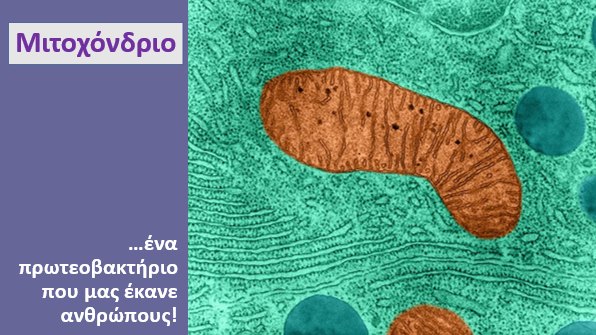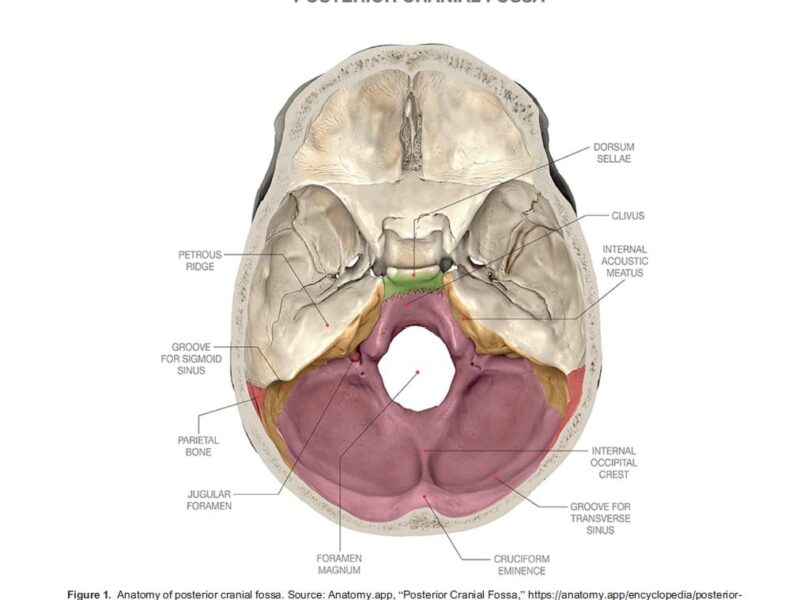επιμέλεια: Γιάννης Φραγκούλης
Ο ανθρώπινος κορωναϊός (coronaviruses) αναγνωρίστηκε στη δεκαετία του 1960, είναι υπεύθυνος για ιογενείς ουσίες που πιστοποιούνται στο άνω αναπνευστικό σύστημα στα παιδιά. Από το 2003 τουλάχιστον πέντε νέοι ιοί αυτής της οικογένειας έχουν ταυτοποιηθεί, ανάμεσα σε αυτά έχουν ανιχνευθεί τα σοβαρά αναπνευστικά σύνδρομα του κορωναϊού, τα οποία έχουν προκαλέσει σοβαρές ιώσεις και θανάτους. Ο NL63 αντιπροσωπεύει μία ομάδα που πρόσφατα έχει ταυτοποιηθεί και περιλαμβάνει τα στελέχη NL και New Haven που έχουν ανιχνευθεί σε παγκόσμια κλίμακα. Αυτοί οι ιοί είναι υπεύθυνοι για προβλήματα στο άνω και κάτω αναπνευστικό σύστημα και είναι παθογενείς, ειδικά στον άνθρωπο. Η διασπορά μιας πρόσφατα ανιχνευόμενης ομάδας, το group II ή το HKU1, δεν έχει ταυτοποιηθεί σε ικανοποιητικό επίπεδο. Ο κλάδος της επιστήμης που ασχολείται με αυτή την οικογένεια ιών έχει αναπτυχθεί μόνο τα τελευταία 15 χρόνια. Η επιδημία του SARS έφερε στο φως της επικαιρότητας αυτή την ιολογία.
Στο άρθρο, όπως παρατίθεται αυτούσιο, αναδημοσιευμένο, μπορείτε να δείτε την ιστορία, το παρασκήνιο, στα πιο σημαντικά σημεία αυτής της οικογένειας του ιού.
History and Recent Advances in Coronavirus Discovery
Kahn, Jeffrey S. MD, PhD*; McIntosh, Kenneth MD†
Author Information
The Pediatric Infectious Disease Journal: November 2005 – Volume 24 – Issue 11 – p S223-S227
doi: 10.1097/01.inf.0000188166.17324.60
Human coronaviruses, first characterized in the 1960s, are responsible for a substantial proportion of upper respiratory tract infections in children. Since 2003, at least 5 new human coronaviruses have been identified, including the severe acute respiratory syndrome coronavirus, which caused significant morbidity and mortality. NL63, representing a group of newly identified group I coronaviruses that includes NL and the New Haven coronavirus, has been identified worldwide. These viruses are associated with both upper and lower respiratory tract disease and are likely common human pathogens. The global distribution of a newly identified group II coronavirus, HKU1, has not yet been established. Coronavirology has advanced significantly in the past few years. The SARS epidemic put the animal coronaviruses in the spotlight. The background and history relative to this important and expanding research area are reviewed here.
HISTORY
The history of human coronaviruses began in 1965 when Tyrrell and Bynoe1 found that they could passage a virus named B814. It was found in human embryonic tracheal organ cultures obtained from the respiratory tract of an adult with a common cold. The presence of an infectious agent was demonstrated by inoculating the medium from these cultures intranasally in human volunteers; colds were produced in a significant proportion of subjects, but Tyrrell and Bynoe were unable to grow the agent in tissue culture at that time. At about the same time, Hamre and Procknow2 were able to grow a virus with unusual properties in tissue culture from samples obtained from medical students with colds. Both B814 and Hamre’s virus, which she called 229E, were ether-sensitive and therefore presumably required a lipid-containing coat for infectivity, but these 2 viruses were not related to any known myxo- or paramyxoviruses. While working in the laboratory of Robert Chanock at the National Institutes of Health, McIntosh et al3 reported the recovery of multiple strains of ether-sensitive agents from the human respiratory tract by using a technique similar to that of Tyrrell and Bynoe. These viruses were termed “OC” to designate that they were grown in organ cultures.
Within the same time frame, Almeida and Tyrrell4 performed electron microscopy on fluids from organ cultures infected with B814 and found particles that resembled the infectious bronchitis virus of chickens. The particles were medium sized (80–150 nm), pleomorphic, membrane-coated, and covered with widely spaced club-shaped surface projections. The 229E agent identified by Hamre and Procknow2 and the previous OC viruses identified by McIntosh et al3 had a similar morphology (Fig. 1).

FIGURE 1.:
Coronavirus OC16. Reprinted with permission from Proc Natl Acad Sci USA. 1967;57;933–940.
In the late 1960s, Tyrrell was leading a group of virologists working with the human strains and a number of animal viruses. These included infectious bronchitis virus, mouse hepatitis virus and transmissible gastroenteritis virus of swine, all of which had been demonstrated to be morphologically the same as seen through electron microscopy.5,6 This new group of viruses was named coronavirus (corona denoting the crown-like appearance of the surface projections) and was later officially accepted as a new genus of viruses.7
Ongoing research using serologic techniques has resulted in a considerable amount of information regarding the epidemiology of the human respiratory coronaviruses. It was found that in temperate climates, respiratory coronavirus infections occur more often in the winter and spring than in the summer and fall. Data revealed that coronavirus infections contribute as much as 35% of the total respiratory viral activity during epidemics. Overall, he proportion of adult colds produced by coronaviruses was estimated at 15%.8
In the 3 decades after discovery, human strains OC43 and 229E were studied exclusively, largely because they were the easiest ones to work with. OC43, adapted to growth in suckling mouse brain and subsequently to tissue culture, was found to be closely related to mouse hepatitis virus. Strain 229E was grown in tissue culture directly from clinical samples. The 2 viruses demonstrated periodicity, with large epidemics occurring at 2- to 3-year intervals.9 Strain 229E tended to be epidemic throughout the United States, whereas strain OC43 was more predisposed to localized outbreaks. As with many other respiratory viruses, reinfection was common.10 Infection could occur at any age, but it was most common in children.
Despite the extensive focus placed exclusively on strains 229E and OC43, it was clear that there were other coronavirus strains as well. As shown by Bradburne,11 coronavirus strain B814 was not serologically identical with either OC43 or 229E. Contributing to the various strain differences in the family of coronaviruses, McIntosh et al12 found that 3 of the 6 strains previously identified were only distantly related to OC43 or 229E.
Epidemiologic and volunteer inoculation studies found that respiratory coronaviruses were associated with a variety of respiratory illnesses; however, their pathogenicity was considered to be low.2,8,13,14 The predominant illness associated with infections was an upper respiratory infection with occasional cases of pneumonia in infants and young adults.15,16 These viruses were also shown to be able to produce asthma exacerbations in children as well as chronic bronchitis in adults and the elderly.17–19
While research was proceeding to explore the pathogenicity and epidemiology of the human coronaviruses, the number and importance of animal coronaviruses were growing rapidly. Coronaviruses were described that caused disease in multiple animal species, including rats, mice, chickens, turkeys, calves, dogs, cats, rabbits and pigs. Animal studies included, but were not limited to, research that focused on respiratory disorders. Study focus included disorders such as gastroenteritis, hepatitis and encephalitis in mice; pneumonitis and sialodacryoadenitis in rats; and infectious peritonitis in cats. Interest peaked particularly regarding areas of encephalitis produced by mouse hepatitis virus and peritonitis produced by infectious peritonitis virus in cats. Pathogenesis of these disease states was various and complex, demonstrating that the genus as a whole was capable of a wide variety of disease mechanisms.20 Human and animal coronaviruses were segregated into 3 broad groups based on their antigenic and genetic makeup. Group I contained virus 229E and other viruses, group II contained virus OC43 and group III was made up of avian infectious bronchitis virus and a number of related avian viruses.21
EMERGENCE OF THE SEVERE ACUTE RESPIRATORY SYNDROME (SARS) CORONAVIRUS
Given the enormous variety of animal coronaviruses, it was not surprising when the cause of a very new, severe acute respiratory syndrome, called SARS, emerged in 2002–2003 as a coronavirus from southern China and spread throughout the world with quantifiable speed.22–24 This virus grew fairly easily in tissue culture, enabling quick sequencing of the genome. Sequencing differed sufficiently from any of the known human or animal coronaviruses to place this virus into a new group, along with a virus that was subsequently cultured from Himalayan palm civets, from which it presumably had emerged.25
During the 2002–2003 outbreak, SARS infection was reported in 29 countries in North America, South America, Europe and Asia. Overall 8098 infected individuals were identified, with 774 SARS-related fatalities.26 It is still unclear how the virus entered the human population and whether the Himalayan palm civets were the natural reservoir for the virus. Sequence analysis of the virus isolated from the Himalayan palm civets revealed that this virus contained a 29-nucleotide sequence not found in most human isolates, in particular those involved in the worldwide spread of the epidemic.25 In the animal viruses, this nucleotide sequence maintains the integrity of the 10th open reading frame (ORF); whereas in the human strains, the absence of this motif results in 2 overlapping ORFs. The function of the ORFs in the animal and human isolates is unknown, and it is unclear whether the deletion of the 29-nucleotide sequence played a role in the transspecies jump, the capacity of the epidemic strain to spread between humans or the virulence of the virus in humans. Curiously data from seroepidemiologic studies conducted among food market workers in areas where the SARS epidemic likely began indicated that 40% of wild animal traders and 20% of individuals who slaughter animals were seropositive for SARS, although none had a history of SARS-like symptoms.25 These findings suggest that these individuals were exposed through their occupation to a SARS-like virus that frequently caused asymptomatic infection. Infection control policies may have contributed to the halt of the SARS epidemic. The last series of documented cases to date, in April 2004, were laboratory-acquired.
The SARS epidemic gave the world of coronaviruses an enormous infusion of energy and activity that contributed to the large amount already known about the virology and pathogenesis of coronavirus infections from the expanding area of veterinary virology.21
CORONAVIRUS GENOME AND STRUCTURE
Coronaviruses are medium-sized RNA viruses with a very characteristic appearance in electron micrographs of negatively stained preparations (Fig. 1). The nucleic acid is about 30 kb long, positive in sense, single stranded and polyadenylated. The RNA is the largest known viral RNA and codes for a large polyprotein. This polyprotein is cleaved by viral-encoded proteases to form the following: an RNA-dependent RNA polymerase and an ATPase helicase; a surface hemagglutinin-esterase protein present on OC43 and several other group II coronaviruses; the large surface glycoprotein (S protein) that forms the petal-shaped surface projections; a small envelope protein (E protein); a membrane glycoprotein (M protein); and a nucleocapsid protein (N protein) that forms a complex with the RNA. The coding functions of several other ORFs are not clear. The strategy of replication of coronaviruses involves a nested set of messenger RNAs with common polyadenylated 3-ends. Only the unique portion of the 5-end is translated.21 Mutations are common in nature. In addition, coronaviruses are capable of genetic recombination if 2 viruses infect the same cell at the same time.
All coronaviruses develop in the cytoplasm of infected cells (Fig. 2), budding into cytoplasmic vesicles from the endoplasmic reticulum. These vesicles are either extruded or released from the cell within the same time frame, and then the cell is destroyed.

FIGURE 2.:
Strain 229E in WI-38 cells. Reprinted with permission from J Virol. 1967;1:1019–1027.
All group I coronaviruses, including 229E, use human aminopeptidase N as their cellular receptor.27 Mouse hepatitis virus, a group II coronavirus, uses a member of the carcinoembryonic antigen family as its receptor.28 The receptor for OC43 is not known, but it may be 1 of several cell surface molecules, including 9-O-acetylated neuraminic acid and the HLA-I molecule.29 The SARS coronavirus uses angiotensin-converting enzyme II as its cellular receptor.30,31
NEWLY IDENTIFIED GROUP I HUMAN CORONAVIRUSES
Since 2003, 5 new human coronaviruses have been discovered (Table 1). Three of these are group I viruses that are closely related and likely represent the same viral species. In 2004, van der Hoek et al32 reported the discovery of a new human coronavirus, NL63, isolated from a 7-month-old girl with coryza, conjunctivitis, fever and bronchiolitis. Using a novel genomic amplification technique, these investigators were able to sequence the entire viral genome. Phylogenetic analysis demonstrated that this virus was a group I coronavirus related to 229E and transmissible gastroenteritis virus, a virus of pigs. Screening of 614 respiratory specimens collected between December 2002 and April 2003 turned up 7 additional individuals who tested positive for NL63. All had upper or lower respiratory tract disease or both.

TABLE 1:
Recent Discoveries of Human Coronaviruses
Shortly after, Fouchier et al33 reported the identification of a coronavirus, named NL, isolated from an 8-month-old boy with pneumonia and grown from a clinical specimen that was obtained in April 1988. Genomic amplification techniques, based on arbitrarily primed reverse transcriptase-polymerase chain reaction (RT-PCR), were used to identify viral sequences. Full genomic sequence analysis of NL showed that this virus was also a group I coronavirus and closely related to NL63. Four of 139 (2.9%) respiratory specimens collected from November 2000 to January 2002 tested positive for NL.33 Respiratory tract disease was observed in these 4 children whose ages ranged from 3 months to 10 years. The discovery of both NL63 and NL depended on the propagation of the viruses in cell culture.
With the use of molecular probes that targeted conserved regions of the coronavirus genome, months later, Esper et al found evidence of a human respiratory coronavirus in respiratory specimens obtained from children younger than 5 years of age, which was designated the New Haven coronavirus (HCoV-NH). This approach was based on the theory that the gene for the viral replicase of all coronaviruses has conserved genetic sequences that encode indispensable, essential functions and that these sequences could be targeted for virus identification and discovery. This approach did not require propagation of the virus in cell culture, organ cultures or experimental animals and could be performed directly on respiratory secretions. After the initial identification of novel sequences of HCoV-NH, specific probes were used to screen respiratory specimens collected between January 2002 and February 2003 from children younger than 5 years of age whose respiratory specimen tested negative for respiratory syncytial virus, influenza, parainfluenza and adenoviruses. Of 895 children, 79 (8.8%) tested positive for HCoV-NH by RT-PCR, a majority of whom were sampled in the winter and spring seasons.34 Sequence and phylogenetic analysis based on the replicase gene showed that HCoV-NH was closely related to both NL63 and NL, although the full genomic sequence of HCoV-NH has not been completed. Cough, rhinorrhea and tachypnea were present in more than one-half of the children infected with HCoV-NH. Eleven children were in the newborn intensive care unit at the time of their sampling and had been hospitalized since birth, suggesting either nosocomial infection or a less likely cause of vertical transmission.
One child, a 6-month-old who tested positive for HCoV-NH, also carried a diagnosis of Kawasaki disease, a vasculitis of early childhood. In a subsequent case-control study, 8 of 11 (72.7%) children with Kawasaki disease tested positive for HCoV-NH while only 1 of 22 (4.5%) age- and time-matched controls tested positive for HCoV-NH (P = 0.0015).36 By correlating these findings, Graf37 detected the presence of a peptide corresponding to the spike glycoprotein of NL63, the closely related virus identified in the Netherlands, in tissue from individuals with Kawasaki disease. The summation of these findings suggests that HCoV-NH may play a role in the pathogenesis of Kawasaki disease. Further research is necessary to determine whether HCoV-NH is the cause of Kawasaki disease.
NEWLY IDENTIFIED GROUP II HUMAN CORONAVIRUSES
In January 2001, a 71-year-old man who had recently returned from Shen-zhen, China, a previously SARS-endemic area, presented in Hong Kong with a fever and productive cough. Although his SARS screening was negative, a novel group II coronavirus sequence was amplified by RT-PCR from his respiratory specimen with the use of primers that targeted conserved regions of the viral replicase gene.35 This novel virus, designated HKU1, was genetically distinct from OC43, the other known human group II coronavirus. This virus could not be propagated in cell culture. Seroepidemiologic studies, based on antibodies reacting with a recombinant HKU1 nucleocapsid, suggested that human infection with HKU1 might be common.35 However, it is unclear whether the enzyme-linked immunosorbent and Western blot assays used to detect HKU1 antibody were also detecting cross-reactive antibody to OC43 or other human coronaviruses.
SUMMARY
The field of coronavirology has advanced significantly in recent years. The SARS epidemic was a dramatic reminder that animal coronaviruses are potential threats to the human population, although the exact mechanism of species-to-species spread of the SARS coronavirus remains obscure. NL63 has been identified in many countries. This virus and the related viruses NL and HCoV-NH are likely the cause of a substantial proportion of respiratory tract disease in infants and children. The impact of HKU1 is not yet known. It seems clear that the coronaviruses infecting humans and causing respiratory disease are heterogeneous and quite widely distributed among groups I and II. It may be that some of the newer coronaviruses represent strains similar to the original B814 and OC strains that could not be further characterized in the 1960s. Additional human coronavirus strains will very likely be discovered, which stresses the need for further investigation into the virology and etiology of these infectious organisms.
DISCUSSION
Question: What is the actual clinical impact of coronaviruses on infectious disease prevalence and severity in the child and adult population?
Kenneth McIntosh, MD: Coronaviruses are common, and they are generally related to the upper respiratory tract family of disorders. They also trigger asthma in children and adults and severe respiratory disease in the elderly. Under the bell-shaped curve of respiratory infection, they probably cause pneumonia and bronchiolitis infections in the infant and child population. The clinical impact of coronaviruses has not yet been fully determined because much still remains to be discovered, despite recent research advances.
Question: Overwhelmingly SARS seemed to have its greatest problems in the adult population, which probably has a lot to do with how it entered the human population and was spread. Did SARS present to be as much of a problem for babies and children?
Kenneth McIntosh, MD: No, interestingly enough SARS did not seem to be as much of a threat to infants and children. The infection appeared to be less severe in babies, and babies were also less infectious. This was evident by looking at the trend of secondary cases that developed. This is in marked contrast to the age-related severity of most respiratory viral infections. These data have provoked considerable interest and discussion, but no good explanation has surfaced. My own theory relates to the fact that almost all respiratory viral infections in adults are reinfections, and these occur on a background of partial immunity. Theoretically, if you took a virus like RSV or parainfluenza and introduced it for the first time into the human population, adults, who are infected and have no preexisting immunity, might develop more severe disease than babies. However, until further research can verify this, it can only be seen as a theory.
REFERENCES
- Tyrrell DA, Bynoe ML. Cultivation of viruses from a high proportion of patients with colds. Lancet. 1966;1:76–77.
- Hamre D, Procknow JJ. A new virus isolated from the human respiratory tract. Proc Soc Exp Biol Med. 1966;121:190–193.
- McIntosh K, Dees JH, Becker WB, Kapikian AZ, Chanock RM. Recovery in tracheal organ cultures of novel viruses from patients with respiratory disease. Proc Natl Acad Sci USA. 1967;57:933–940.
Αναδημοσίευση από το https://journals.lww.com/pidj/fulltext/2005/11001/history_and_recent_advances_in_coronavirus.12.aspx




